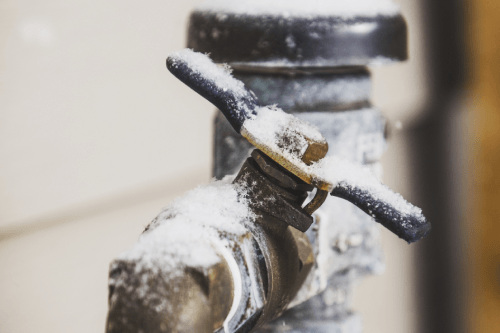Guidance for Avoiding Frozen Plumbing in Winter: Expert Tips
Guidance for Avoiding Frozen Plumbing in Winter: Expert Tips
Blog Article
Have you been on the lookout for details on Winter Plumbing Precautions: Preventing Frozen Pipes?

Winter can wreak havoc on your plumbing, specifically by freezing pipelines. Right here's how to avoid it from occurring and what to do if it does.
Intro
As temperatures drop, the threat of icy pipelines boosts, possibly causing costly repair work and water damage. Comprehending just how to stop icy pipes is critical for home owners in chilly climates.
Avoidance Tips
Shielding vulnerable pipes
Wrap pipes in insulation sleeves or use heat tape to secure them from freezing temperatures. Focus on pipelines in unheated or external locations of the home.
Home heating strategies
Maintain indoor rooms adequately warmed, especially locations with plumbing. Open up closet doors to allow warm air to flow around pipelines under sinks.
How to identify icy pipes
Look for reduced water flow from faucets, uncommon smells or noises from pipes, and noticeable frost on revealed pipelines.
Long-Term Solutions
Structural modifications
Take into consideration rerouting pipes away from exterior wall surfaces or unheated locations. Add additional insulation to attics, cellars, and crawl spaces.
Upgrading insulation
Invest in top notch insulation for pipes, attic rooms, and wall surfaces. Appropriate insulation helps maintain constant temperatures and reduces the threat of frozen pipelines.
Securing Outdoor Pipes
Garden hoses and outside faucets
Disconnect and drain yard hose pipes before winter. Mount frost-proof spigots or cover outside taps with protected caps.
Recognizing Frozen Pipes
What triggers pipelines to freeze?
Pipelines freeze when subjected to temperatures listed below 32 ° F (0 ° C) for extended durations. As water inside the pipes freezes, it increases, putting pressure on the pipe walls and potentially triggering them to break.
Risks and damages
Frozen pipes can bring about water system disruptions, home damage, and expensive repair work. Burst pipes can flooding homes and create considerable architectural damages.
Indications of Frozen Water Lines
Identifying icy pipelines early can stop them from rupturing.
What to Do If Your Pipes Freeze
Immediate activities to take
If you believe frozen pipes, maintain taps open to ease stress as the ice melts. Make use of a hairdryer or towels soaked in warm water to thaw pipelines gradually.
Verdict
Avoiding icy pipelines needs proactive actions and quick feedbacks. By comprehending the reasons, signs, and safety nets, property owners can secure their pipes during cold weather.
6 Proven Ways to Prevent Frozen Pipes and Protect Your Home
Disconnect and Drain Garden Hoses
Before winter arrives, start by disconnecting your garden hoses and draining any remaining water. Close the shut-off valves that supply outdoor hose bibs and leave the outdoor faucet open to allow any residual water to drain. For extra protection, consider using faucet covers throughout the colder months. It’s also important to drain water from any sprinkler supply lines following the manufacturer’s directions.
Insulate Exposed Pipes
Insulating your pipes is an effective way to prevent freezing. Pipe insulation is readily available at home improvement stores and is relatively inexpensive. Pay close attention to pipes in unheated areas such as the attic, basement, crawl spaces, or garage. Apply foam insulation generously to create a buffer against the cold. You can also wrap your pipes in heat tape or thermostat-controlled heat cables for added warmth.
Seal Air Leaks
Inspect your home for any cracks or openings that could let in cold air. Seal any holes around the piping in interior or exterior walls, as well as the sill plates where your home rests on its foundation. Additionally, make sure to keep your garage door closed unless you’re entering or exiting. Leaving it open creates a significant air leak that can lead to frozen pipes.
Allow Warm Air Circulation
During cold snaps, it’s essential to allow warm air to circulate evenly throughout your home. Leave interior doors ajar to promote better airflow. Open kitchen and bathroom cabinets to help distribute heat consistently around the rooms. If you have small children or pets, be sure to remove any household chemicals or potentially harmful cleaners from open cabinets for safety.
Let Faucets Drip
A small trickle of water can make a big difference in preventing ice formation inside your pipes. When temperatures drop significantly, start a drip of water from all faucets served by exposed pipes. This continuous flow helps prevent the water from freezing. Additionally, running a few faucets slightly can relieve pressure inside the pipes, reducing the chances of a rupture if the water inside does freeze.
https://choateshvac.com/6-proven-ways-to-prevent-frozen-pipes-and-protect-your-home/

Hopefully you enjoyed reading our post on How To Avoid Freezing Pipes. Thank you for taking a few minutes to browse our piece of content. Those who enjoyed our article plz remember to share it. Thank you for going through it.
Prices & Booking Report this page